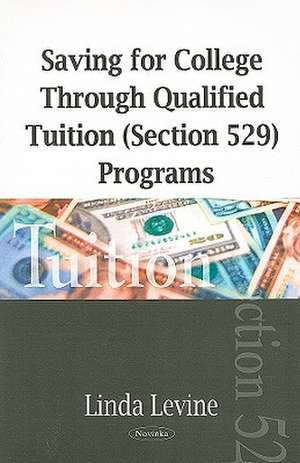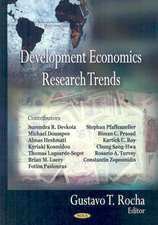Saving for College Through Qualified Tuition (Section 529) Programs
Autor Linda Levineen Limba Engleză Paperback – 31 oct 2008
Preț: 288.94 lei
Preț vechi: 390.97 lei
-26% Nou
Puncte Express: 433
Preț estimativ în valută:
55.30€ • 57.52$ • 45.65£
55.30€ • 57.52$ • 45.65£
Carte disponibilă
Livrare economică 24 martie-07 aprilie
Preluare comenzi: 021 569.72.76
Specificații
ISBN-13: 9781604569872
ISBN-10: 1604569875
Pagini: 70
Ilustrații: tables
Dimensiuni: 136 x 214 x 7 mm
Greutate: 0.12 kg
Editura: Nova Science Publishers Inc
ISBN-10: 1604569875
Pagini: 70
Ilustrații: tables
Dimensiuni: 136 x 214 x 7 mm
Greutate: 0.12 kg
Editura: Nova Science Publishers Inc
Cuprins
PARTIAL CONTENTS: Preface; What Is a Section 529 Program?; Prepaid Tuition Plans; State-Sponsored Plans; Plans of Eligible Institutions of Higher Education; College Savings Plans; Recent Issues by Type of Section 529 Program; College Savings Plans: Fees and Disclosure; Prepaid Tuition Plans: Closures and Modifications; Tax Treatment of QTP Contributions and Earnings; Qualified Earnings Distributions; A Penalty; Transfer Tax Provisions for Section 529 Plans; Investment Control and the Tax Consequences of Transferring Funds; Between Section 529 Plans; Changing Beneficiaries; Same-Beneficiary Rollovers; Index.













